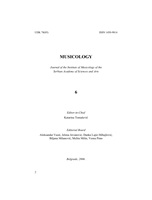Различити видови модернизма/неокласицизма Душана Радића
Different Shapes of Modernism/Neoclassicism: Case Study of Dušan Radić’s Creative Output
Author(s): Vesna MikićSubject(s): Music, Sociology of Art, History of Art
Published by: Muzikološki institut SANU
Keywords: Dušan Radić; neoclassicism; modernism; Choir music; Gungulice; Spisak; The Tower of Sculls; Ćele kula
Summary/Abstract: This paper deals with musical neoclassicism in the context of modernism, and shows that some neoclassical features, usually considered to be reactionary and retrograde, could and should be understood as modernist. This kind of contextualization is especially important when Serbian postwar music is in question. Neoclassicism in Serbian music began in a specific ideological milieu. Paradoxically, and despite its “call for order” characteristics, it turned out to be a kind of modernistic phenomenon. On one hand it received all typical shapes of European modernism, while on the other it remains as a typical idiom of postwar Serbian musical production, blending in perfectly with the postmodern. These issues are argued and proved through analysis of some pieces written by Dušan Radić during the 1950’s. We see a kind of “disguised” modernism in the composer's subversion of the norms of national romanticism and socialist realism in the neoclassical choir piece Gungulice (1953), a modernism that is based on Freud's “reaction-formation” notion. Then, a more radical kind of modernism is followed in the piece The List for chamber ensemble (1952– 1954), arguing the notion of radical in the context of Serbian music, and coming to the conclusion that different interpretations of this piece as avant-garde, radical, or neoclassical/modernist can occur as a consequence of the listener's position. In the case of The Tower of Sculls we observe the same kind of “disguised” modernism, but now directly interwoven with proto-postmodern elements, coming from popular music practices, which is also the case in other pieces by Dušan Radić. The composer’s nonconformity, lack of pretentiousness, and inclination toward the simplicity of everyday things form his modernistic identity
Journal: Muzikologija
- Issue Year: 1/2006
- Issue No: 6
- Page Range: 267-279
- Page Count: 13
- Language: Serbian

